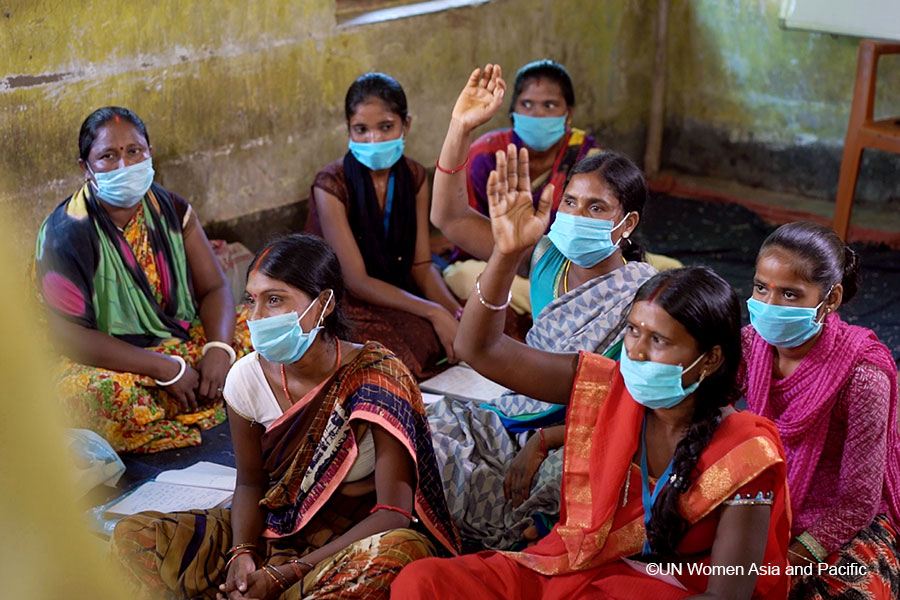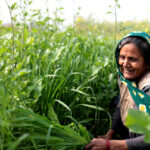Evidence from Campbell reviews on social policy responses to Covid-19
Blog series: Responding to Covid-19: evidence from Campbell reviews (Part 2/3)
Covid-19 hits the world’s most vulnerable the hardest: children and youth, older persons, migrants and people with disabilities. It is evolving from a pandemic into a global economic and social crisis. In the first article of this blog series, Howard White describes immediate responses to Covid-19. This is the second of three articles presenting evidence from Campbell reviews on social policy response to Covid-19.
Social policy response for children and youth
Do we know what works to improve child health and educational outcomes?
In the education sector, 166 countries have implemented country-wide school and university closures, resulting in more than 1.52 billion children and youth currently out of school or university. This is 87% of the world’s school and university student population. Nearly 60.2 million teachers are no longer in the classroom. The situation is expected to have severe long-term consequences in terms of interrupted learning, compromised nutrition and elevated drop-out rates. Increased investment in education, child protection, health and nutrition, and water and sanitation can help the world reduce the damage caused by this crisis and avoid future crises.
School drop-outs and learning
While there are no simple solutions to the drop-out crisis, there are clearly “supports” that can be provided within the academic environment and at home that would improve students’ chances of staying in school. The findings from a Campbell review on drop-out prevention and intervention programmes show that most school- and community-based programmes, such as class restructuring, vocational training, tutoring and homework assistance are effective in decreasing school drop-outs.
Furthermore, alternative schools providing educational services to at-risk students who have been excluded from traditional school settings were found to be effective to reduce drop-outs. The key insight from the review is to consider the cost of different programmes and chose one that best fits with local needs as well as the implementer’s abilities and resources.
With the Covid-19 school closures, we need more research on how to deliver such programmes using online platforms, with consideration for access to digital technology for these students. Many countries use online classes, radio, television and text messaging to support access to remote learning during the pandemic. For example, the Seguimos Educando (continuing to educate) programme in Argentina is delivered via the Educ.ar education portal. To ensure equity in access to these learning resources, the digital platform is free of charge and does not consume the student’s data allowance. For students without access to technology or connectivity, the programme has learning resources that are delivered to their homes.
Another Campbell review, on school-based decisionmaking in low- and middle-income countries – which considers reforms that devolve decisions about funding, management or curriculum/pedagogy to the school – finds small to moderate positive effects in reducing repetition and dropouts, and better test scores. However, these effects had a stronger impact on wealthier students with more educated parents, and on children in lower grade levels. School‐based decisionmaking reforms appear to be less effective in disadvantaged communities, particularly if parents and community members have low levels of education and low status relative to school personnel. This review suggests that in the context of Covid-19, decisions about curriculum delivery using online platforms could be devolved to the school level to better meet local needs.
Globally, conditional and unconditional cash transfers in education are widely used as social policy tools to facilitate enrolment and regular attendance. These findings are supported by a Campbell review on cash transfers; both conditional and unconditional. Cash transfers prove to be an effective strategy to improve the enrolment of children in schools, and has the strongest effect if conditions are properly monitored and enforced.
In response to Covid-19, some countries have already increased unconditional cash transfers to families with children, for example Canada will give parents $300 per child as a part of the regular Canada Child Benefit (CCB) payment, with no need to apply, and no conditions.
Nutrition and food security
The impact of Covid-19 will be more far-reaching than loss of education. The priority for governments is to ensure that hygiene, behavioural and food safety standards are followed. Closing schools also eliminates access to school-based nutrition programmes for many children, particularly disadvantaged students; driving malnutrition rates upwards. Families affected by loss of jobs and income due to business closures may experience further food insecurity.
A Campbell review on management of acute malnutrition evaluates the effectiveness of community-based strategies such as community-based mobilisation, screening, follow-up, counselling and education to improve identification and management of severe acute malnutrition and medium acute malnutrition.
The review found larger benefits from integrated community‐based strategies on improving recovery than in-patient management. Food distribution programmes are often life-saving, especially in low-income communities and among refugee populations, but the traditional process of gathering people to pass out food and supplies risks spreading Covid-19 among particularly vulnerable populations. The World Food Programme has issued food distribution recommendation, including blueprints for setting up sites that minimise contact and integrate health checks, along with sanitation stations that can be adapted to national and local settings.
Social inclusion programmes for school-age children are an important component of ensuring all children are in school and ready to learn. School feeding programmes, in particular, are intrinsically pro-poor because their greatest benefits accrue to children who are poor and hungry. This is a proven tool to keep the poorest children in school. The evidence from a Campbell review supports this and finds positive effects of school feeding practices on overall health, weight gain as well as on educational attainment of children by increasing enrolment and attendance, reducing absenteeism due to illness and thereby decreasing drop-outs.
While schools are closed, it is important for governments to proactively develop measures to mitigate the loss of food for socially disadvantaged children. For example, the Canadian government announced $100 million to improve access to food for Canadians facing social, economic and health impacts of the Covid-19 pandemic, of which $50 million was invested to food banks.
A Campbell review on financial benefits for child well-being and health provides two key insights into the effectiveness of these interventions. Firstly, direct benefits of financial support to families and improvement in child health outcomes are uncertain because most studies showed small effects on total household income and had no conditions attached to how money was spent. Secondly, given that increased financial resources is thought to be critical to the reduction of child poverty in many countries, it is unclear whether any effects are the consequence of long-term material deprivation and could be remedied in the short term by the provision of increased financial resources. It is important to monitor effects of these financial benefits programmes on child health and education.
Water, sanitation and hygiene (WASH)
Adequately managed WASH services are critical during disease outbreak. If not adequately maintained, poor hygiene can increase the risk of diseases spreading. Sanitation and community-based approaches for handwashing and other hygiene practices should be rolled out to sustain these practices in low- and middle-income countries, given their proven benefits as documented in a Campbell review on promoting better hygiene practices and improved sanitation.
Social policy responses for older persons and people with disabilities
Do we know what works to improve social outcomes for older persons and people with disabilities?
An increasing number of countries are implementing restrictions in the movement of persons to halt the spread of the Covid-19 disease. This can lead to increased social isolation, food insecurity and impairment among people in vulnerable groups, particularly in older persons and people with disabilities.
Home visits are an increasing popular health promotion intervention for community-dwelling older persons and have even been adopted into national policy in several countries, including Denmark and Australia. However, a Campbell review on home visits in older adults finds home visits to be ineffective in maintaining health, preventing impairment, or reducing deaths and numbers of people who are institutionalised in community dwellings. Consequently, this review does not support the widespread and automatic adoption of home visiting programmes for preventing morbidity or mortality among community‐dwelling older adults. In the context of Covid-19, personal support workers and visitors are banned from most long-term care homes to prevent spread of disease. A number of community-based initiatives have been launched to mitigate feelings of social isolation, such as pen-pal programmes for older adults in care homes.
People with disabilities often experience barriers in accessing services that others have easy access to, including preventive measures such as handwashing, access to health services, education, employment and transport. The evidence on the effectiveness of community-based rehabilitation (CBR) for people with disabilities suggests that CBR is effective in improving the clinical outcomes and enhancing functioning and quality of life of the person with disabilities.
However, CBR has to be adapted to the Covid-19 situation. In response to the increased need of support for people with disabilities, many organisations have issued comprehensive disability-inclusive guidelines, such as CBM’s “Disability Inclusive Community Action – Covid-19 Matrix” and the World Health Organization’s (WHO) Disability considerations during the Covid-19 outbreak.
Social policy response for community monitoring
Do we know what works to reduce corruption and increase accountability of public health resources?
During a crisis like Covid-19, when countries must resort to extraordinary measures to help prevent the spread of the virus, misinformation and the inappropriate use of emergency funds could divert valuable resources from the people who need them most. Strong and capable leadership, backed by a healthcare workforce with the necessary expertise, are key to an effective response to pandemics. Many countries are using digital tools to enable public participation and transparency to facilitate citizen access. For example, the Brazilian Transparency Portal discloses specific federal spending related to combating the Covid-19.
A Campbell systematic review on community monitoring interventions identifies four types of community monitoring: information campaigns which provide information on local services and peoples’ right to access these services; scorecards, or citizen report cards, allowing community members to rate the quality of local services; social audits, that bring together community members, service providers and politicians to monitor implementation of specific investments; and grievance redress mechanisms that provide channels for community members to report mistreatment, corruption and poor services.
More research is needed on how community monitoring can be strengthened in times of crisis, such as a pandemic, to prevent valuable resources being lost to corruption.
We welcome feedback on this blog series and collaboration with organisations working on generating an evidence base on social policy interventions to combat mid-term and long-term impacts of Covid-19. Contact us: info@campbellcollaboration.org.








